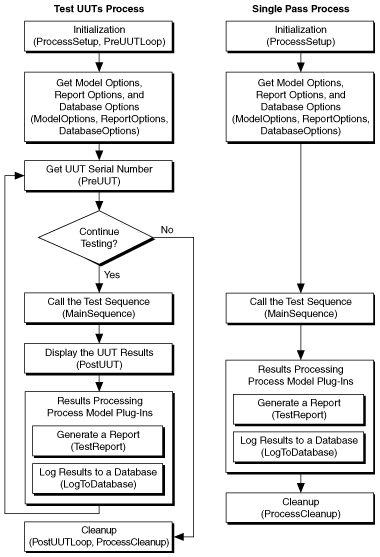TestStand ProcessModel 官方定义如下:
Testing a UUT requires more than just executing a set of tests. Usually, the test system must perform a series of operations before and after it executes the sequence that performs the tests. Common operations that define the testing process include identifying the UUT, notifying the operator of pass/fail status, logging results, and generating a report. The set of such operations and their flow of execution is called a process model.
TestStand includes a predefined Sequential model, Parallel model, and Batch model you can modify or replace. Use the Sequential model to run a test sequence on one UUT at a time. Use the Parallel and Batch models to run the same test sequence on multiple UUTs at the same time.
You can define a custom process model, which is a sequence file in which you can write different test sequences without repeating standard testing operations in each sequence. The ability to modify a process model is essential because the testing process can vary according to production lines, production sites, or company systems and practices. You can edit a process model in the same way you edit other sequence files. You can also use client sequence files to customize various model operations by overriding the callback sequences process models define.
Process Model Architecture
To better understand the information in this section, familiarize yourself with process models, entry points, and the relationship between a process model and a client sequence file.
The Sequential, Parallel, and Batch process models use the same basic structure for running a test sequence. Using the Test UUTs or Single Pass Execution entry point, the process models run test sequences, generate reports, and log unit under test (UUT) results to a database according to configuration settings, as shown in the following figure.

The main differences between the process models are the number of UUTs each process model runs for the Test UUTs or Single Pass Execution entry points and the way each process model relates to and synchronizes with UUTs.